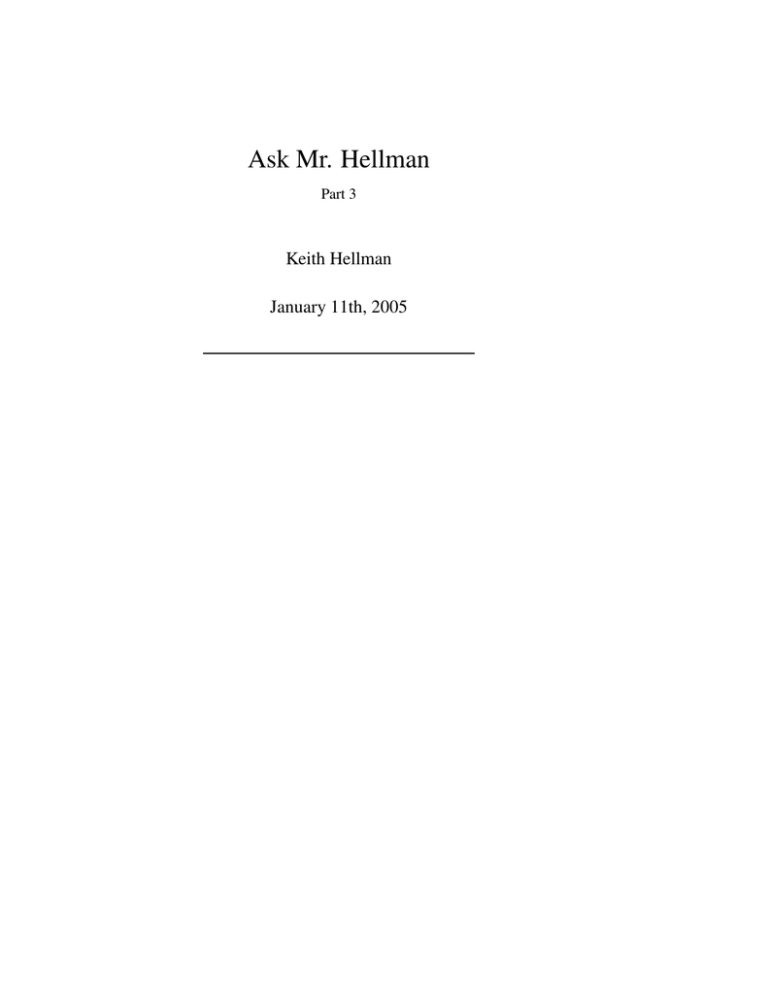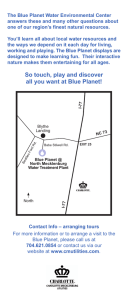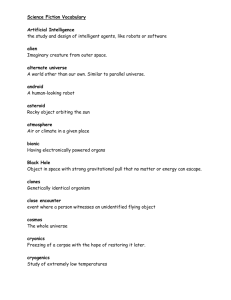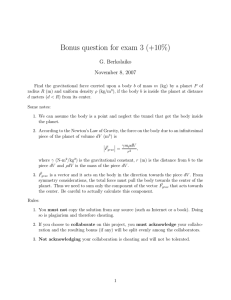Ask Mr. Hellman Keith Hellman January 11th, 2005 Part 3
advertisement

Ask Mr. Hellman Part 3 Keith Hellman January 11th, 2005 Question: How far can flying fish fly? • Swim quickly toward the surface and leave the water at up to 55 mph. • Once free of the water, they extend their large pectoral fins, and G LIDE between several yards to 120 feet. • Flying fish can use their tail fins as rudders when they are close enough to the water. • They can jump over 12 feet out of the water. Flying fish use this ability to escape predators (not for eating). They would be better named as ’Gliding Fish’. What important adaption are they missing to be true flying fish? Question: Can Anacondas live on land? Yes. Anacondas can move on land (and in fact hang out in trees some times). But they are best camouflaged and move the fastest in water, so that is where they usually hunt. Question: What are the lowest and highest temperatures ever recorded (they don’t have to be naturally occurring temperatures)? Lowest Man-made Temperature The lowest man-made temperature achieved so far is 450 picokelvin. It was achieved by a team of scientists at the Massachusetts Institute of Technology in Cambridge, Massachusetts, USA: A.E. Leanhardt, T.A. Pasquini, M. Saba, A. Schirotzek, Y. Shin, D. Kielpinski, D.E. Pritchard and W. Ketterle. The results were published in Science magazine on September 12, 2003. 450 picokelvin = 0.000000000450 K There are only estimates of the hottest temperatures that exist. An obvious one hot spot is our sun: • Center ≥ 10, 000, 000K • Surface ≈ 5800K • Corona ≈ 1, 500, 000 − 2, 000, 000K Question: How do windmills get energy? Does this answer the question? Question: How do windmills get energy? Or Where does the wind come from? The Sun gives out all sorts of radiation, including heat and light energy, and is so powerful that it radiates 170,000,000 GW of energy to the Earth! Thats more energy in a second than all the electricity used in the UK in a month! When this energy reaches the Earth, the ground and other surfaces absorb it, and heat the surrounding air. It’s these differences in temperature, together with the rotation of our planet, that create the wind. About 1 to 2 per cent of the energy coming from the sun is converted into wind energy, which is enough to meet the electricity needs of the world three times over, and is a source of power that will never run out. How many Gigawatts of the Sun’s energy turns into wind? If there is so much energy available from wind, why can’t we harness it all? Question: Does are tongue have hair? Papilla This is a medical term meaning projectile shape. You have papillae (plural form of papilla) on your tongue but they do not grow hair. What do we call them on our tongues? Fordyce Spots • Small, 1-2 mm, yellowish to brown spots on the underneath and back of the tongue. • Benign, not-contagious • A small number of Fordyce Spots are present in the majority of people • A large number of Fordyce Spots are present in a small percentage of people −→ the tongue may appear a slightly different color −→ the slang term Hairy Tongue Neither of these are actual hair follicles. Question: If everyone were to cut every plant off of the planet, what would happen? What do plants give us? Question: If everyone were to cut every plant off of the planet, what would happen? Where would all our hamburgers come from? Question: If everyone were to cut every plant off of the planet, what would happen? What would we build with? Question: If everyone were to cut every plant off of the planet, what would happen? What would we write on? Question: If everyone were to cut every plant off of the planet, what would happen? What would our prairies look like? Question: If everyone were to cut every plant off of the planet, what would happen? What would the western slope look like?








